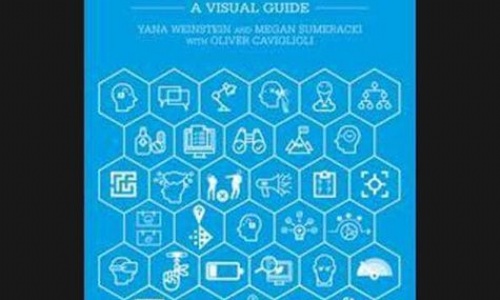UNDERSTANDING HOW WE LEARN – A VISUAL GUIDE

Summary by Kathryn Pipe
This book states it sets out to review basic processes – perception, attention and memory… focussed on applied research.
PART ONE – Evidenced Based Education and the Science of Learning
Emphasises the need for strategies to be scientifically tested, “after all would you give your child a pill that had never been scientifically tested?” This part spends much time detailing how the research is carried out – combination of lab work and in the class. Emphasises the need for readers to be critical – noting especially blogs. We shouldn’t rely on intuition “if we trust out intuition repeatedly…we will spend time engaging in a learning strategy that simply does not work”.
PART TWO – Basics of Human Cognition Processes
- Perception: information is interpreted differently depending on the context and the person…teachers need to be sensitive to this. Top down processing brings your prior knowledge.
- Attention: a focus on specific stimulus – it is typically thought of as a limited capacity resource. We can only give our proper attention to one thing at a time. When we think we are doing two things at once we are actually swapping between two very quickly – this is not time efficient and testing has proven this.
- Memory: Memory is not like a library as previously thought but is reconstructive. Every time we retrieve a memory we are actually changing it – every time a memory is activated it is altered. We can even have false memories. Identifies whether new learning makes it from short to long term memory depends on a number of factors (some of which are currently unknown). An important known factor is “whether information is encoded in a deep and meaningful way so that connections can be made and understanding achieved.” A four stage model given and explained: encoding, consolidation, storage and retrieval.
PART THREE Strategies for Effective Learning
Six strategies –supported from cognitive psychology
SPACING – spreading study over time rather than cramming
RETRIEVAL PRACTICE – bringing information to mind from memory
The following four strategies can be used to support spacing and retrieval practice…
Interleaving – switching between ideas or types of problems (switch between ideas during a study session, don’t study one for too long. Go back over the ideas again in different order to strengthen your understanding. Make links between different ideas as you switch between them)
Elaboration – asking how or why. It is thought to encourage organisation and integrating of ideas. Self-explanation – explaining the steps they are taking out loud.
Concrete examples – helps student grasp abstract ideas. Using by providing a range of examples make it more likely students will understand the abstract idea. Must be careful that physical examples are not too fun to play with as will drive attention away from the learning task or too vivid.
Dual Coding – combines words and visuals. when we combine text information and visual information learning is enhanced because we process verbal and visual information through separate channels. It gives you two ways of remembering the Information later on. The placing of labels and the amount of text is very important to ensure students are not experiencing cognitive overload.
